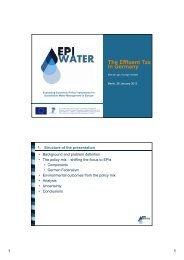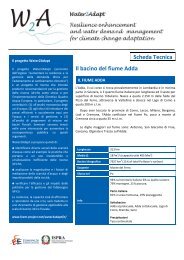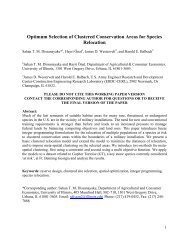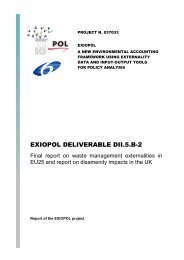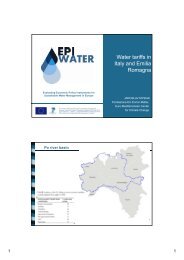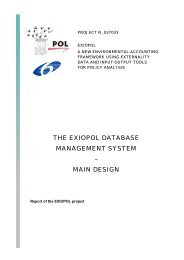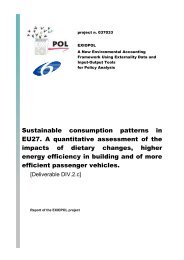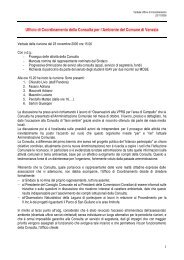Gulf and European Energy Supply Security - Feem-project.net
Gulf and European Energy Supply Security - Feem-project.net
Gulf and European Energy Supply Security - Feem-project.net
You also want an ePaper? Increase the reach of your titles
YUMPU automatically turns print PDFs into web optimized ePapers that Google loves.
opposition of some of its members, notably Saudi<br />
Arabia, a longer-term vision of OPEC’s interests<br />
did not prevail: no consideration was given to the<br />
danger of dem<strong>and</strong> destruction <strong>and</strong> growing non-<br />
OPEC supplies – although it was rather clear at<br />
Figure 1: Crude Oil Prices since 1861-2008<br />
US dollar per barrel<br />
World events<br />
that time that significant volumes of oil would be<br />
made available to the market from new producing<br />
provinces, notably the North Sea, Alaska <strong>and</strong><br />
Mexico.<br />
OPEC attempted to defend its posted price by<br />
cutting back on production <strong>and</strong> enforcing quotas<br />
on its members. Non-compliance eroded OPEC’s<br />
solidarity, already badly challenged by multiple<br />
conflicts between its Middle Eastern members.<br />
In 1985, Saudi Arabia ab<strong>and</strong>oned the posted<br />
price system <strong>and</strong> resorted to <strong>net</strong>back pricing. The<br />
<strong>net</strong>back price regime was short lived, lasting only<br />
about two years. It led to a collapse in crude oil<br />
prices, partly because OPEC quota discipline broke<br />
down <strong>and</strong> production increased, <strong>and</strong> partly because<br />
<strong>net</strong>back pricing tends to guarantee refiners’ margins<br />
Functioning of the International Oil Markets <strong>and</strong> <strong>Security</strong> Implications<br />
<strong>and</strong> encourages refineries to run at full capacity,<br />
flooding the market with products <strong>and</strong> eventually<br />
drawing down the <strong>net</strong>back value of the barrel.<br />
Following this came the era of reference pricing,<br />
which is the prevailing regime to date. Reference<br />
pricing means that the price of a crude oil which<br />
is not freely traded is indexed to the price of a<br />
crude oil which is freely traded, plus or minus an<br />
adjustment factor which is periodically reviewed<br />
by the producing country depending on market<br />
conditions. In this system, the producing country<br />
can manipulate the adjustment factor, but by far the<br />
major influence on the price of any non-traded crude<br />
comes from variations in the price of the benchmark<br />
crude, to which it is tied.<br />
Two markets have emerged as benchmark for<br />
all other crude oils – that is Brent in the UK <strong>and</strong><br />
WTI in the US. This regime has proven resilient in<br />
the face of political disturbances, but volatility has<br />
monotonously increased <strong>and</strong> has exploded since<br />
2007. The reason for increased volatility has been




